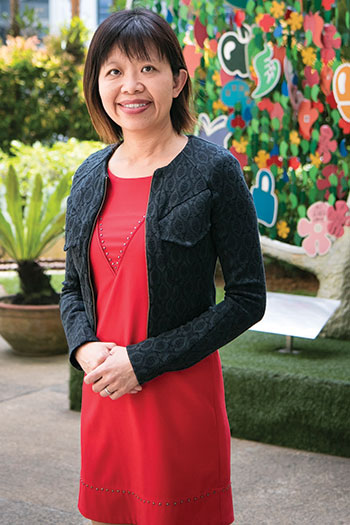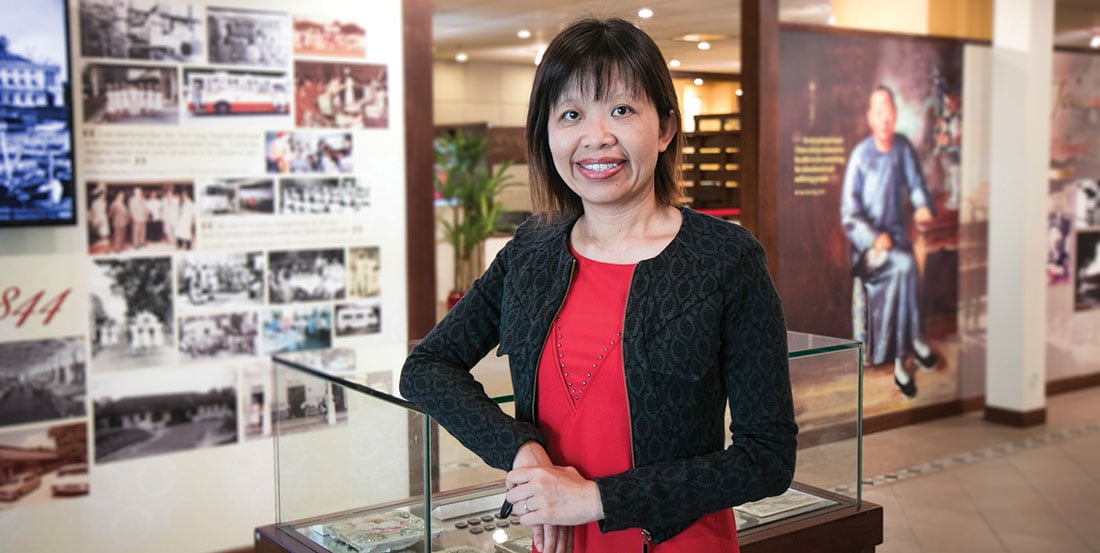A career in public healthcare is fulfilling in a way that few other careers can be. Healthcare practitioners touch lives daily, dispensing care and empathy to others in need, while at the same time shape the blueprint of modern healthcare.
Besides doctors, nurses and pharmacists, there is also a team of medical experts that form the backbone of public healthcare – the allied health professionals (AHPs). From occupational therapists to dieticians, radiographers to medical social workers, AHPs play an integral role in the delivery of seamless and timely care.
One such AHP is Susan Niam, a physiotherapist by training and now Chairperson for the Allied Health Services and Pharmacy Division at Tan Tock Seng Hospital (TTSH). With over 26 years of experience under her belt, Susan tells us all about the allied health professions, the people she has met, and why she thinks healthcare workers should be more like penguins.
Give us an overview of what you do.
Susan Niam: My role oversees 13 professional groups, comprising of over 1,200 staff, on a wide spectrum of issues such as clinical quality, patient care, education and professional development. I also look into community partnerships and collaboration with various agencies and ministries.
For example, we work closely with hospices and community partners like the Nursing Homes and Community Hospitals to ensure that patients are rightly sited after being discharged. We strongly believe that patient care should be holistic and extended into the community.
What inspired you to go into the allied health industry?
Susan: I have always wanted to work with people. Physiotherapy helps people to achieve their potential physically by improving their function and mobility. This attracted me because it is deeply connected to people living active and enriched lives.
One person who left a lasting impression on me was Philippe Steiner, then the head of TTSH’s physiotherapy department. Back in the early 1990s, very few resources were allocated to allied health and there were only 13 physiotherapists in the whole of TTSH. It was Philippe who recognised that if we wanted better care for patients, we had to upgrade our skills. So, despite our lean manpower situation and high workload, I was part of the pioneer batch of AHPs sent overseas for postgraduate training. To further encourage me to pursue my studies, Philippe personally cut out a scholarship advertisement and encouraged me to go.
Share with us a career highlight.
Susan: Looking back, the highlights have always been about the people. In particular, the SARS outbreak in 2003 when TTSH was appointed the SARS-designated hospital. This episode left an indelible mark on me. I was deeply touched to see how our entire team of healthcare colleagues including AHPs, continued to care professionally for patients in ICU and wards. This was despite the fact that they were under intense stress in the face of uncertainty, danger and death. In those days, many staff were shunned for treating patients with SARS. That level of dedication and commitment was truly memorable, because it shows that we are all here for the patients.

Susan Niam
Healthcare scholar
Chairperson
Allied Health Services & Pharmacy Division
Tan Tock Seng Hospital
What are some of the career development and learning opportunities for AHPs?
Susan: We look at individual learning needs and the needs of the patients before discussing the AHPs’ training opportunities, career prospects and deliverables with them. Next, we match them to the right programmes and scholarships or training institutes, and guide their performance along the way.
Broadly speaking, there are three career tracks: clinical, research, and education. For the clinical track, AHPs generally start at a job grade where they see simpler cases with lesser complications before moving on to complex cases. For the research track, AHPs can work towards getting research grants and embarking on some studies and publications.
Regardless of whichever track they pursue, all AHPs are expected to continue seeing patients so as to stay current and keep up their clinical skills.
How can young AHPs effect change in this new landscape?
Susan: Moving ahead, we need to redesign care to do more with less. We need to really crack our heads and review our care processes to see how we can better integrate or improve. We have established streamlined protocols for rehabilitative care of patients in ICU together with Doctors and Nurses.
In addition, we have also introduced an extensively automated and highly integrated Pharmacy system which has freed up the team to conduct more value-added work. We are currently looking into developing mobile phone applications to help patients manage their own care needs at home. Hopefully, everyone can play their part as we move towards a leaner, more efficient model of healthcare.
What advice would you impart to aspiring allied health scholars?
Susan: I would like to share with them the story titled, “Our Iceberg is Melting”. A colony of penguins in Antarctica that has lived on the same iceberg for many years suddenly discovers that their iceberg is melting, and they go about taking steps to mitigate that. The story is actually a powerful analogy to show how individuals can work together in the face of adverse conditions to champion successful change.
Similarly, I hope that aspiring allied health scholars can be open to learn and to be ready to unlearn. We should remain curious, question the status quo and think out of the box. We should also be willing to learn from other professions apart from healthcare and bring back best practices into our care for patients.

